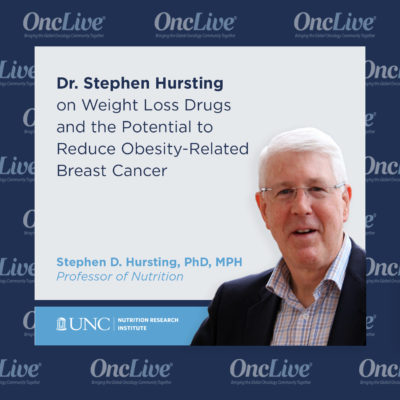This article originally appeared on OncLive.com.
Stephen Hursting, PhD, MPH, professor, Department of Nutrition, Lineberger Comprehensive Cancer Center, University of North Carolina (UNC) at Chapel Hill, and professor of nutrition, UNC Nutrition Research Institute, discusses the potential role of weight loss drugs in reducing the pro-cancer effects associated with obesity.
In a presentation at the 23rd Annual International Congress on the Future of Breast Cancer® East, Hursting explained that obesity has been observed as a well-established risk factor for various cancers, including luminal A and triple-negative breast cancer.
Given this correlation, some strategies intended to significantly reduce weight could also help mitigate these cancer risk, Hursting explains. He emphasizes the importance of achieving substantial weight loss in the range of 20% to 25% as a critical threshold for reversing obesity’s pro-cancer effects.
Traditionally, weight loss strategies have been limited to restrictive diets or surgical interventions, both of which have significant limitations and challenges, he says. However, the recent emergence of glucagon-like peptide-1 (GLP-1) receptor agonists, such as tirzepatide (Mounjaro for type 2 diabetes; Zepbound for weight loss) have revolutionized the approach to weight management in the United States. Hursting notes that these drugs have gained popularity in the United States in recent years with approximately 6% of the general population now using them.
While GLP-1 receptor agonists such as tirzepatide are known for their effectiveness in reducing cardiometabolic risk factors such as cardiovascular disease, stroke, and obstructive sleep apnea, their impact on cancer risk remains largely unexplored, Hursting continues. He notes that exploring this knowledge gap is critical, given the established relationship between obesity and cancer, and the observed weight loss benefits of these drugs.
Hursting explains that tirzepatide stands out as a promising candidate for further investigation, concluding that further studies are essential to determine its potential role in cancer prevention and to fully understand the broader implications of its use in clinical practice.

